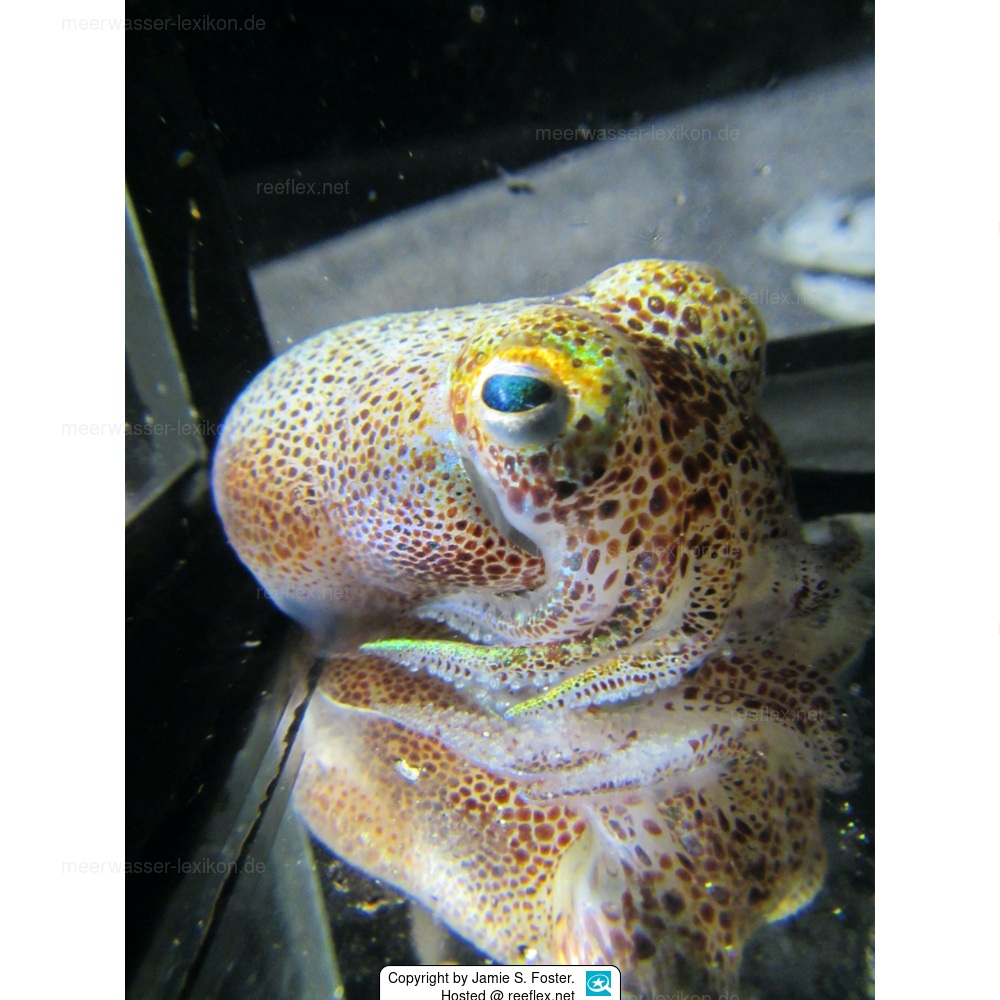Info
This dwarf squid is found in shallow water and inhabits sandy and muddy areas near seagrass beds.
Euprymna scolopes sticks grains of sand to its body to camouflage itself, buries itself in sand or mud during the day and emerges at night to catch and eat small crustaceans.
A distinctive feature of this dwarf cuttlefish is a special light organ that emits just enough light to hide the silhouette of the dwarf cuttlefish from predators at night, and to attract potential small prey.
Meanwhile, much research has been done on the bacterium Aliivibrio fischeri (Beijerinck, 1889), formerly known as Vibrio fischeri Beijerinck, 1889, in its light organ, this bacterium helps the miniature cuttlefish achieve its helpful bioluminescence.
We would like to express our special thanks to Prof. Dr. Jamie S. Foster, who has made a previously unpublished photo available to the reeflex.net!
Euprymna scolopes sticks grains of sand to its body to camouflage itself, buries itself in sand or mud during the day and emerges at night to catch and eat small crustaceans.
A distinctive feature of this dwarf cuttlefish is a special light organ that emits just enough light to hide the silhouette of the dwarf cuttlefish from predators at night, and to attract potential small prey.
Meanwhile, much research has been done on the bacterium Aliivibrio fischeri (Beijerinck, 1889), formerly known as Vibrio fischeri Beijerinck, 1889, in its light organ, this bacterium helps the miniature cuttlefish achieve its helpful bioluminescence.
We would like to express our special thanks to Prof. Dr. Jamie S. Foster, who has made a previously unpublished photo available to the reeflex.net!







 Prof. Dr. Jamie S. Foster, USA (Florida)
Prof. Dr. Jamie S. Foster, USA (Florida)






